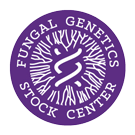Strain: Neurospora crassa
FGSC #2943
Reporting Genes: Tp(IR->IR)T54M94,un-18
Species: crassa
Allele: ---
Alternate Strain Number: 398
Depositor: DDP
Linkage Group: IR IR
Mating Type: A
Genes

Reporting Genes: Tp(IR->IR)T54M94,un-18
Species: crassa
Allele: ---
Alternate Strain Number: 398
Depositor: DDP
Linkage Group: IR IR
Mating Type: A
